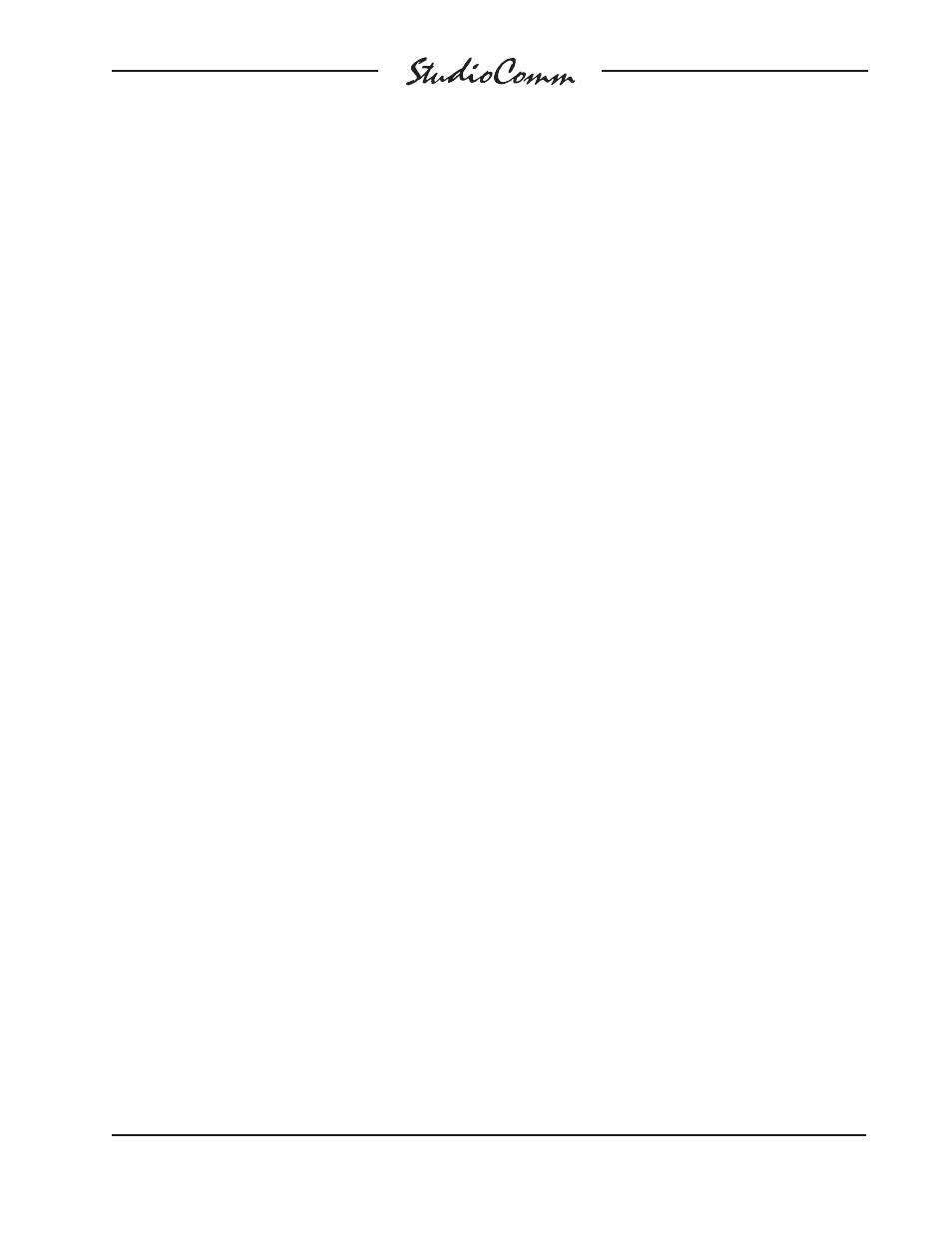Channel mute/solo – Studio Technologies 76D V.2.02 User Manual
Page 35

Model 76D/77 User Guide
Issue 2, June 2009
Studio Technologies, Inc.
Page 35
for Surround
the dim button will enable the function. The
dim button is always set to “latch” the func-
tion on and off. The 4-digit display, when
selected for output level mode, will indicate
the revised post-fader monitor output level.
If the requested “dimmed” output level is
equal to or less than –96.0 dB, the monitor
output will go into full mute and the display
will show four dashes (
– – – –). When dim
is active the post-fader monitor output level
reduction will apply no matter whether the
level is being set by the rotary level control
or by the reference level button. The LED
associated with the dim button will light
whenever dim is active. If dim mode is en-
abled via the remote dim function the dim
LED will flash.
It’s worth using a few sentences to discuss
the auto dim off function. Whenever dim
is enabled due to the dim button being
pressed, as well as the rotary level control
being active (reference level mode is not
active), changing the setting of the rotary
level control will automatically turn off
dim. The auto dim off function is a unique
attempt at protecting the aural health of
users. No longer will there be a heart-stop-
ping blast of audio when the dim button
is pressed, supposedly to enable dim, but
actually turning dim off because it was
already enabled. It’s hard to explain unless
you’ve experienced this in person—trust
us, this situation can and does happen!
Note that the auto dim off function is not
active whenever dim is enabled due to
the remote dim function being active. This
allows remote control equipment, such
as a talkback system, to reliably dim the
monitor outputs.
Rotary Level Control
The rotary level control is used to manually
adjust the post-fader surround and stereo
monitor output levels. The level control
provides the ability to adjust the post-fader
surround and stereo monitor output level
over a 70 dB range. Technically the rotary
level control is a 24-step-per-revolution
mechanical encoder. The amount of level
change in dB per step (“click”) will depend
on how quickly the control is turned. When
changed slowly, each step represents a
0.5 dB change in level. In this case, to tra-
verse the entire level range would require
rotating the control more than four full
turns. But the Model 77’s software detects
when the control is rotated more quickly
and increases the amount of level change
in dB per step. A little experimentation will
allow the user to acquire a good “feel” for
how best to use the control.
The reference level LED will flash when
the rotary level control sets the output
level to be the same as the stored refer-
ence level. Whenever the rotary level con-
trol attempts to set the output level for less
than –70.0 dB, the post-fader surround
and stereo monitor output channels will au-
tomatically mute. As previously discussed,
the 4-digit display indicates the mute con-
dition by showing four dashes (– – – –).
If the mute all function is active the rotary
level control won’t have an impact on the
post-fader surround and stereo monitor
output levels. It’s also not active whenever
the reference level function is active, ex-
cept if the auto reference level off function
has been enabled.
Channel Mute/Solo
The channel mute/solo functions allow
specific channels to be selected for individ-
ual or group mute or “solo” monitoring. The
functions impact the post-fader surround
and stereo monitor outputs, taking place
